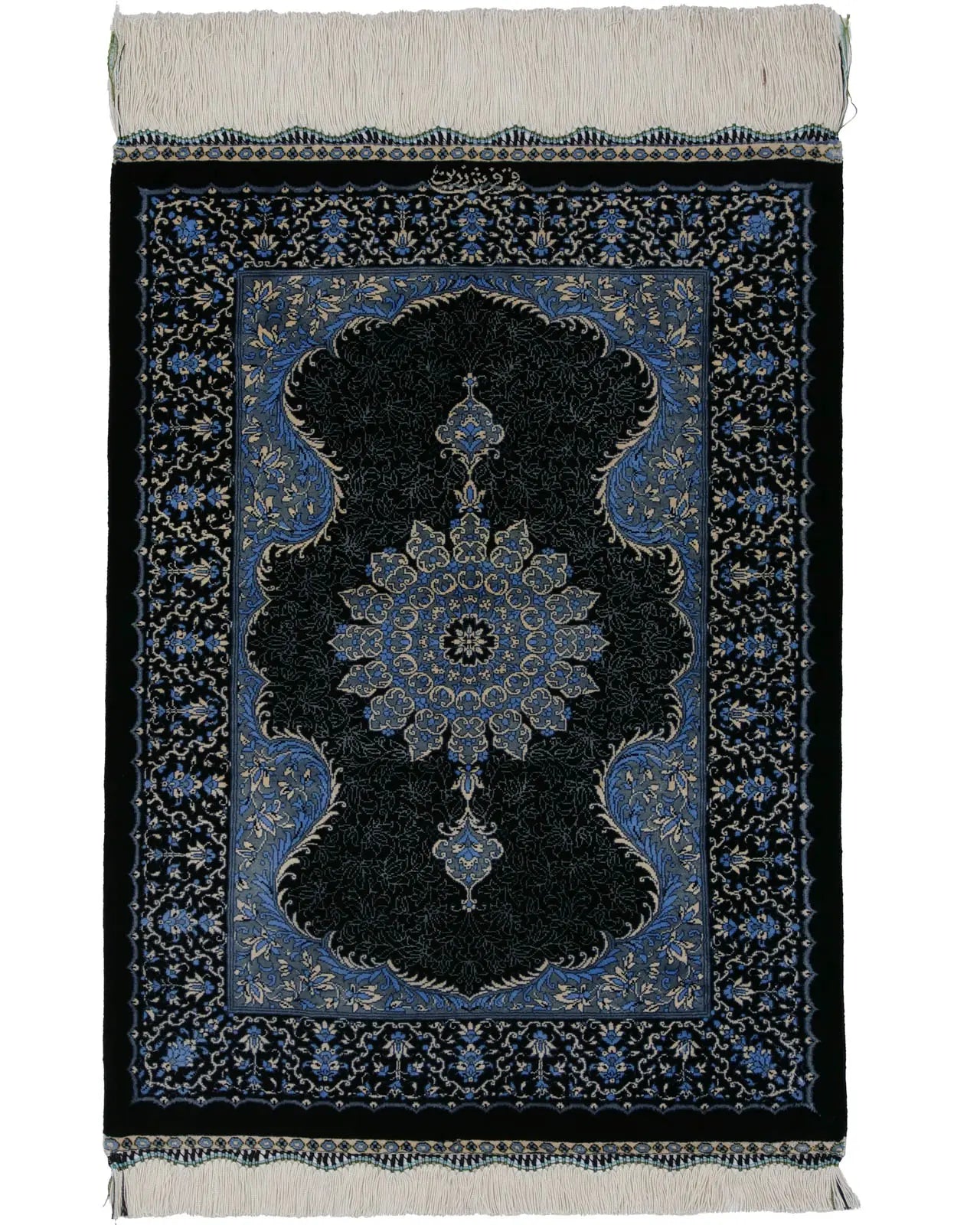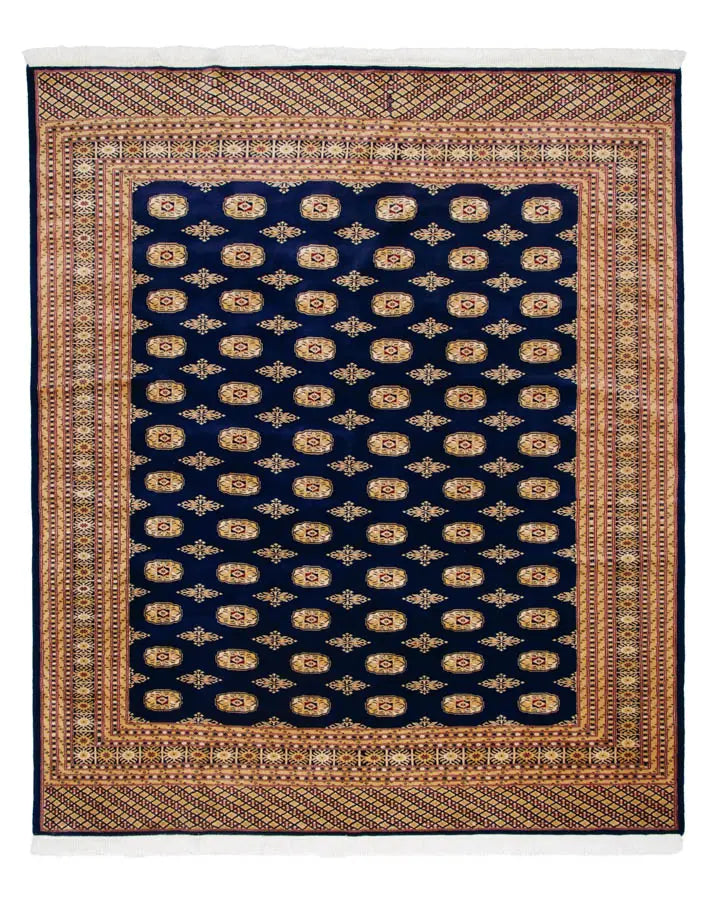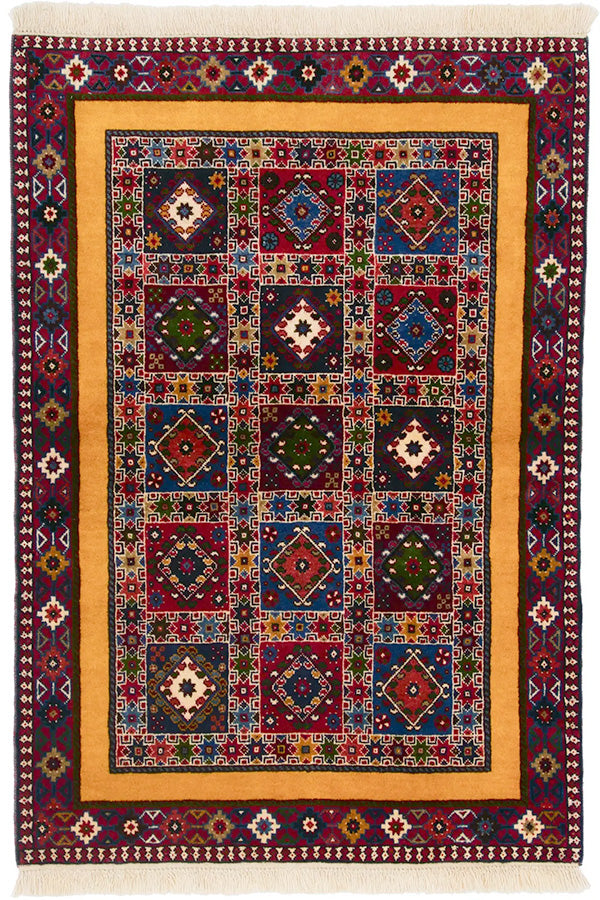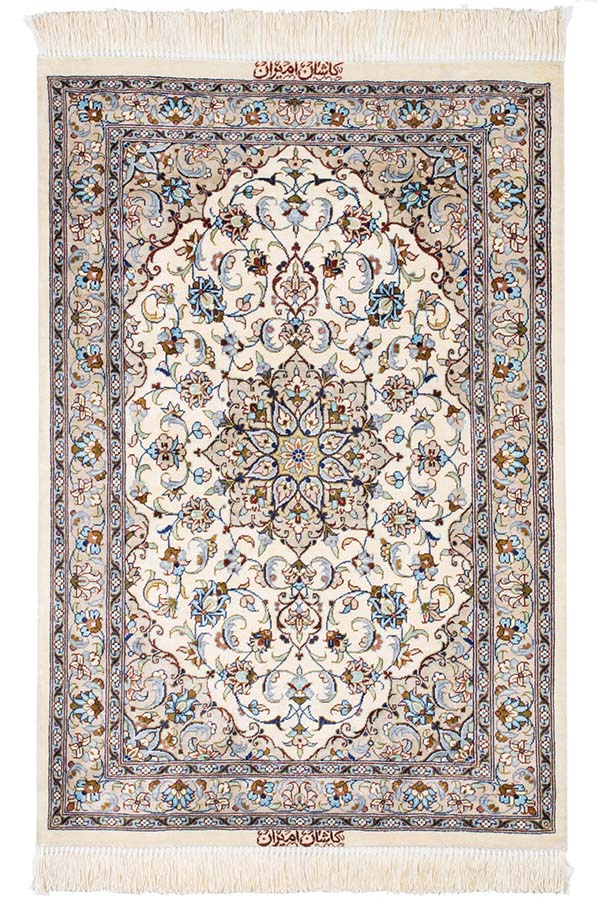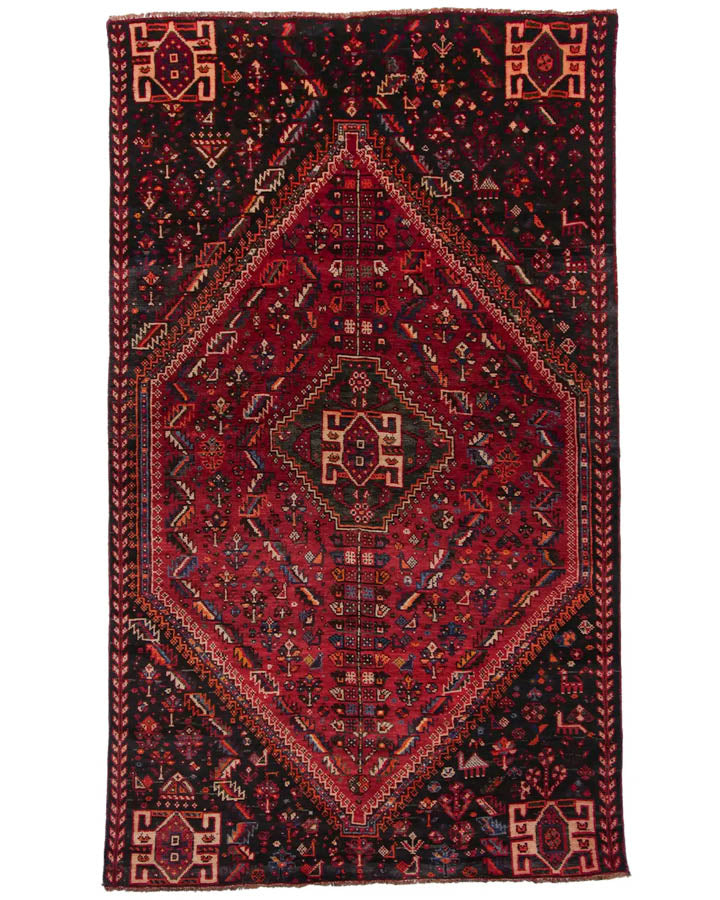Abadeh
Type: Persian carpet
Location: Central Iran (formerly Persia)
Knot Density: 150,000 - 350,000 knots per square meter
Features: Sturdy, hexagonal medallion
Pile: Wool
Abadeh rugs are Persian carpets woven in the city of Abadeh, located in Fars Province in southern Iran.
They are known for blending nomadic traditions with a sense of modern refinement. A typical feature of Abadeh rugs is a central diamond-shaped medallion surrounded by small geometric motifs of flowers and animals. This design style is known as “Heybatlu,” and is a defining characteristic of Abadeh rugs.
Nature-inspired elements such as deer, birds, trees, and flowers are commonly woven into these rugs, reflecting the artistic freedom of nomadic culture.
The color palette is typically based on reddish-brown or brick tones, dyed using plant-based natural dyes. Over time, these colors develop a rich depth, giving the rug a warm, aged character.
Geographically, Abadeh lies between Shiraz and Isfahan—two important cultural centers—which has made it a historical crossroads of trade and cultural exchange. As a result, Abadeh rugs reflect a blend of artistic influences, particularly those of the Qashqai and Luri nomads. Their designs often feature a rustic yet powerful aesthetic that captures the spirit of tribal craftsmanship.
